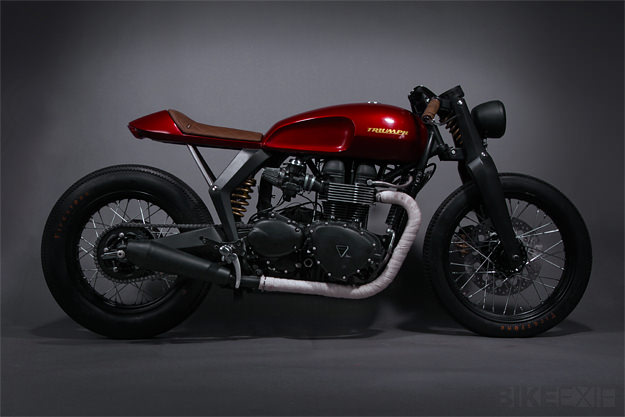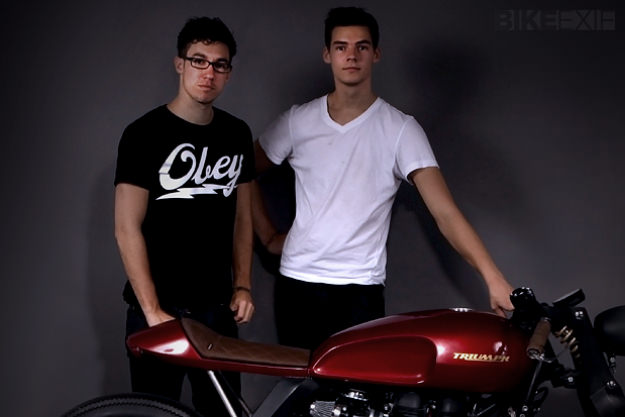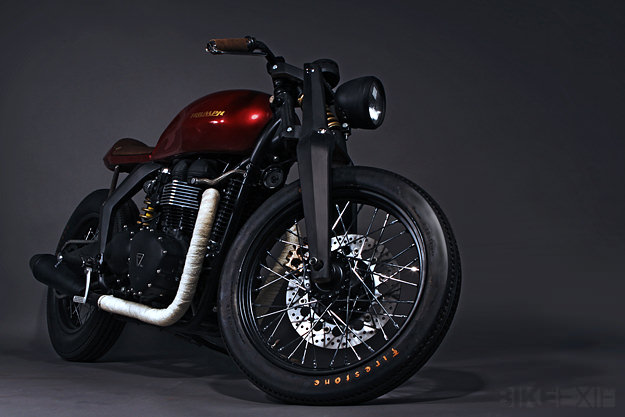
EXCLUSIVE Here’s the most exciting new motorcycle concept we’ve seen in a while—and it doesn’t come from an in-house design studio. It’s the work of two young English designers, Roy Norton and Tom Kasher, in a collaboration with Triumph Motorcycles and Barbour Outdoor Clothing. The base platform is the Triumph Bonneville, heavily restyled and fitted with girder forks.

The idea for the Speed Twin started when Norton and Kasher were in their final term at university. They started sketching ideas for “a bike taking retro themes in a modern direction”. After landing a placement with motorcycle design studio Xenophya, the pair contacted Triumph. Product Manager Simon Warburton liked what he heard, and agreed to get involved. He wrote a brief requesting a modern re-interpretation of a classic theme: “A bike based around our 865cc air-cooled parallel twin, styled to appeal to younger riders.” Warburton wanted to see “the bike the Bonneville might have evolved into, in an alternative universe”.
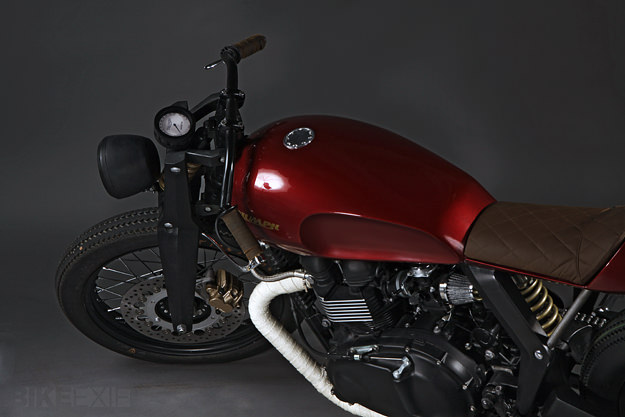
After visits to the Ace Cafe London and the National Motorcycle Museum, Norton and Kasher set to work, taking inspiration from cafe racers, bobbers and Triumph bikes of old. They agreed a design direction with Triumph, and a ‘digital tape’ was created: Photoshop images of the proposal in side projection, which allows the design to be evaluated against the vehicle package and check constraints such as seat height, tank volumes and ergonomics. According to Norton and Kasher, “Triumph provided huge amounts of support and guidance through the design stage,” ensuring there would be no engineering, manufacturing or homologation issues.
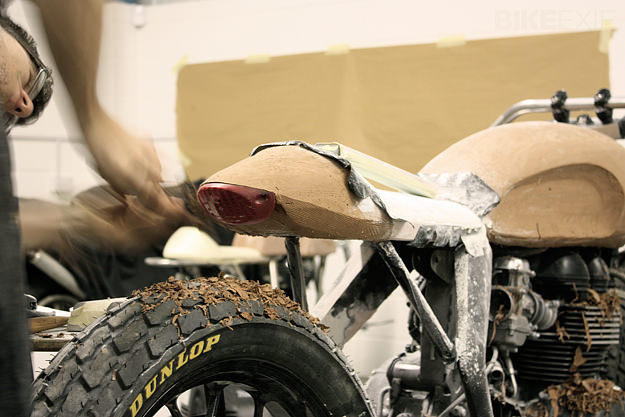
The motorcycle in the images we’re looking at was created using a mixture of model board, foam and Automotive Styling Clay—a wax-like substance that can be shaped by tools to create the tank, seat unit and swing arm. “A design can become a three-dimensional object quickly. The nature of the material means it can be molded and sculpted very easily to refine and perfect the design.”
The frame of a production Bonneville—supplied by Triumph—was heavily modified. Chopped and refabricated, it’s the basis for a strong and contemporary look. The contrast comes from the front, where girder forks pay homage to the bikes of the past. Barbour cloth is used on the seat fabric and grips, adding durability and style to the finish of the Twin, and the filler cap and instruments were also redesigned.
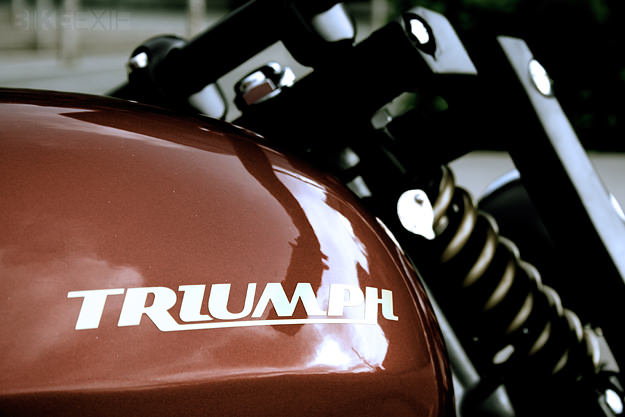
Once the basics of the model were in place, the bike was transferred from the Northumbria University studios to Xenophya Design. The prototype was refined and painted, transforming it from a blend of clay, foam and metal into a full-scale model. Firestone tires, inverted levers and Thruxton brakes were added to round out the build.
Triumph is pleased with the result of the project. “The bike looks great,” says product manager Warburton. “Some elements may have an influence on some of our future projects.” And Norton (right, bottom) and Kasher (left) now have an insight into how production motorcycles are designed, at the highest level in the industry. They’ve landed full-time jobs at Xenophya, which means their work is likely to hit the streets in the future, in the form of production motorcycles. Judging by the aesthetics of the Triumph Speed Twin, that’s good news indeed.
